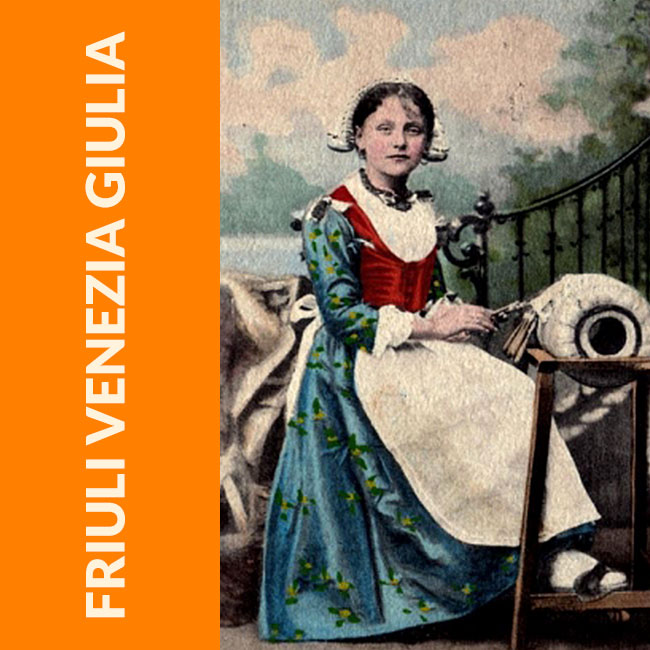DIALECTS AND FOLKLORE
Italy boasts a vast repertoire of regional songs. These bear witness to traditions that have come down to us through dialects that are still largely alive today. Folklore – in a watered-down version and purged of many of its links to local culture – was at the centre of the cultural policy of the Fascist regime, only to then become virtually extinct in the early nineteen sixties, with the accomplishment of the so-called economic miracle. As the historical and social conditions that made it possible changed, this heritage was nonetheless preserved through revivals and re-proposed on special occasions, festivals, recordings, radio and television programmes. On the one hand, the cultural diversity that these traditions express was appreciated to the point of encompassing them within the wider sphere of political opposition. On the other, the same traditions were misrepresented through improbable versions with sounds, voices, and arrangements that did not belong to them. After decades of silence, interest in authentic folklore was revived in the 1990s, or at least that was the intention: neither the philological approach, nor its opposite – its packaging following the logic of the commercial song – enjoyed audiences’ favour, however. In the digital era, folklore is no longer seen in opposition to hegemonic culture but as a resource and a different option to the dominant soundscape. Among the most prominent phenomena is the revival of the Pizzica Salentina, around which has formed a cultural movement with an international reach. Some niche genres have adapted to the new technologies, from the ballad singer tradition to folk dance. This is particularly relevant in the South of Italy: in Calabria (where a type of low production value music defined “da bancarella” [market stall] is particularly popular), Sicily, Sardinia, Campania and Abruzzo, the dialectal song is still very much alive, less as pure folklore than in a popular urban and modern version with lyrics full of double meanings which deal with nostalgic, sentimental, religious themes and are also often indulgent towards rascals and outlaws.

